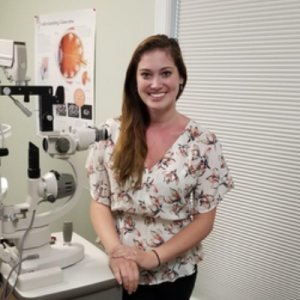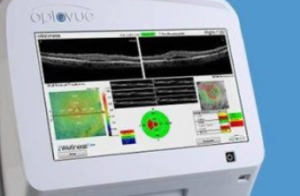Not sure if your eyes are healthy? Here are 7 symptoms that should never be ignored.
Eye problems can present with a range of symptoms, some more common than others. But, as with any medical condition, the earlier an eye condition is diagnosed, the sooner you can receive effective treatment.
According to statistics, an estimated 93 million adults in the United States are at high risk for serious eye health issues, but only half have visited an eye doctor in the past 12 months.
Moreover, studies show that:
- Over 150 million Americans are living with some sort of vision problem.
- Up to 8 million are suffering from poor vision due to undiagnosed myopia (nearsightedness), hyperopia (farsightedness) or astigmatism.
- Over 4 million suffer with significant vision loss or blindness.
Therefore, if you notice any changes in your vision or any of the symptoms below, it is always best to consult with your eye doctor.
1. Squinting
While squinting from bright sunlight is a normal reaction, excessive squinting is a common sign of myopia (nearsightedness), as well as other eye conditions.
Squinting occurs when a person closes their eyelids to reduce the aperture through which light enters the eyes.
Squinting is a sign that you are suffering with blurry vision or experience pain when light enters the eye — which could be the first sign of many serious eye conditions.
Many people also use the term ‘squinting’ when describing an eye turn (strabismus). Any sign of an eye turn requires an eye examination.
2. Blurry vision
Blurry vision is a common symptom of many different eye conditions and should always be checked by an eye doctor to rule out early signs of sight-threatening eye diseases.
Experiencing sudden blurry vision requires urgent medical attention.
3. Eyestrain
In the last several years, eyestrain has become increasingly more prevalent due to the rapid rise in digital device usage.
Prolonged screen time often leads to eyestrain and a vision condition called Computer Vision Syndrome or Digital Eye Strain.
SEE RELATED: Are my Eye Pupils Different?
If you have noticed any changes in your vision, contact an eye doctor near you for a comprehensive eye exam.
4. Headaches or migraines
Clear and comfortable vision is achieved when the eyes work together, coordinating their movements to achieve binocular vision.
A binocular vision problem, such as convergence insufficiency or binocular vision dysfunction (BVD), places extra stress on the focusing muscles of the eyes and often results in frequent headaches or migraines.
Any binocular vision problems can lead to occasional or chronic, but debilitating headaches and migraines.
5. Poor night vision
Poor night vision, often referred to as night blindness, makes it difficult to see clearly at night or in low-light settings, such as a movie theater or restaurant.
Night blindness or difficulties driving at night can be the first symptom of many serious eye conditions that require prompt attention.
6. Seeing flashes or floaters
Flashes are small bright pricks of light, while floaters appear as shadows or dark spots that appear to move across the visual field.
A sudden onset or increase in the amount of flashes or floaters in your field of vision can indicate an eye emergency, such as a retinal tear or detachment.
7. Pain in or around the eyes
Pain in or around the eyes is a symptom of many eye conditions, some of which include:
- Blepharitis
- Conjunctivitis (pink eye)
- Corneal abrasion
- Corneal infection (keratitis)
- Foreign body in the eye
- Glaucoma
- Iritis or uveitis
- Optic neuritis
- Stye
- Ocular tumor
What are the most common vision problems among adults?
Refractive errors, such as myopia, hyperopia, astigmatism and presbyopia are the most common vision problems among adults.
Other common eye conditions that affect vision include:
- Cataracts
- Retinal diseases
- Corneal conditions
- Macular degeneration
- Glaucoma
- Diabetic retinopathy
- Amblyopia (lazy eye)
- Strabismus (eye turns)
If you have a family history or other risk factors that increase your chances of developing any of these conditions, inform your eye doctor during your eye exam.
How often do I need an eye exam?
Vision problems can cause a range of uncomfortable symptoms, and significantly affect your work performance. Some vision problems may be early signs of a serious eye condition that can threaten your vision, if left untreated.
Moreover, many sight-threatening eye diseases don’t present with noticeable symptoms until permanent damage has already occurred
The American Optometric Association (AOA) recommends annual eye exams for all patients, regardless of age or physical health.
With annual eye exams, you can rest assured that your eyes and vision are thoroughly evaluated every year, to ensure that your optical prescription is up-to-date and your eye health is in optimal condition.
LEARN MORE: Eye Exams
If you are experiencing any of the symptoms outlined above, schedule an appointment with an eye doctor near you for a comprehensive eye exam.
The earlier an eye problem is diagnosed, the sooner you can receive an effective treatment plan.
If you notice any changes in your vision or any of the symptoms above, consult with your eye doctor.










